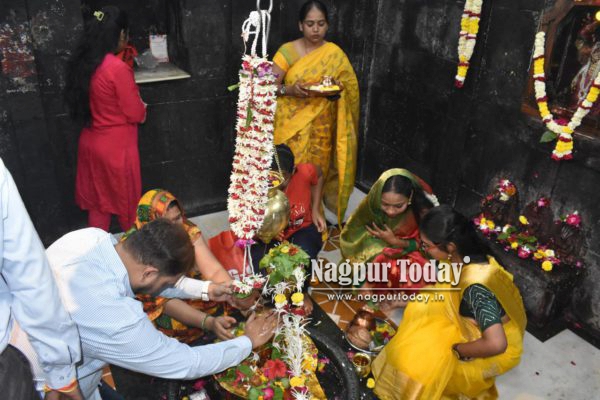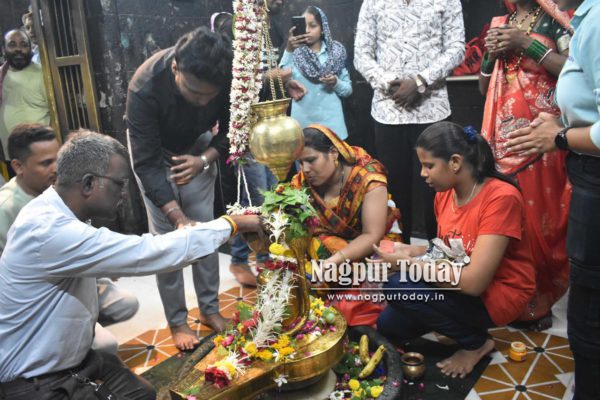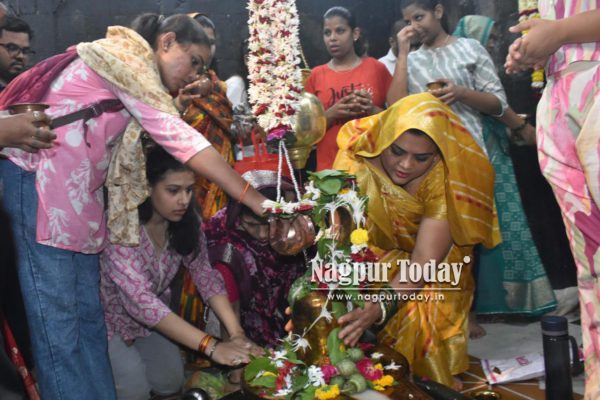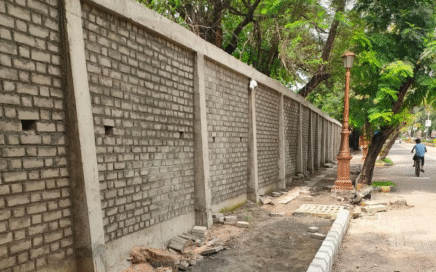Nagpur: The city of Nagpur reverberated with chants of “Om Namah Shivaya” as thousands of devotees thronged Lord Shiva temples across the city on the first Monday of Shravan, one of the most sacred months in the Hindu calendar. From early morning, long queues of worshippers were seen at prominent shrines, offering prayers, flowers, and holy water to seek divine blessings.
Temples including Kalyaneshwar Mandir in Mahal, Telangkhedi Shiva Temple, Panchmukhi Mahadev Mandir in Dharampeth, and others in Civil Lines, Jaripatka, and Sakkardara were beautifully decked up with lights, vibrant floral decorations, and traditional motifs. The festive atmosphere reflected the deep spiritual significance of the month of Shravan.
Shravan, also known as Shravan Maas, holds immense religious significance in Hinduism. It is believed to be governed by Lord Shiva, and every Monday, known as Shravan Somwar, is dedicated to His worship. Devotees observe fasts, visit temples, and perform Abhishekam (ritual bathing) of the Shiva Linga with milk, holy water, honey, curd, and ghee, while chanting mantras throughout the day.
Special rituals include the hanging of the Dharanatra, a traditional vessel that drips sacred liquids continuously over the Shiva Linga, and the lighting of the Nandadeep, an eternal flame kept alive throughout the day and night. Offerings of Bael leaves, white flowers, and Falam-Toyam (fruit and water) are considered especially auspicious.
Many devotees fast from sunrise to sunset, breaking their fast only after the evening prayers and Aarti. The spiritual discipline is believed to purify the soul, attract positive energy, and bring peace and prosperity to families.
The sanctity of Shravan is further amplified by its mythological roots. According to the Puranas, the Samudra Manthan (churning of the cosmic ocean) occurred during this month. Among the 14 treasures that emerged, the deadliest poison, Halahal, threatened to annihilate the universe. Lord Shiva, to save all beings, consumed the poison and held it in his throat, which turned blue, earning Him the name Neelkantha.
To cool the effects of the poison, the moon was placed on His head and the holy Ganga was offered to Him by the Devas. This divine event makes it especially auspicious to pour Ganga jal (holy water) on Shivlings during Shravan, as it is believed to reduce suffering and grant divine protection.
In Nagpur, the temple premises were abuzz with activity, bhajans, special aartis, and the fragrance of incense filled the air. Volunteers at many temples distributed prasad and managed crowd control as part of community service. Despite the monsoon humidity, the enthusiasm among devotees, from young children to the elderly, remained unwavering.
With four more Mondays to go in this sacred month, the spiritual fervour in the city is expected to rise with each passing week. As devotees prepare for more rituals, fasts, and prayer offerings, the Shravan Somwar celebrations serve as a reminder of India’s rich cultural and spiritual heritage — where tradition meets devotion in every temple lane.
















